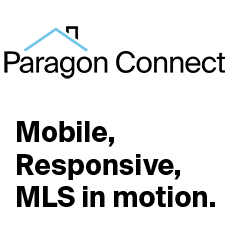Lots of interesting tidbits from this article by Andrea Brambila at Inman News.
Zillow vs RPR: Which got more initial funding?
“Turns out Zillow got a lot more funding in its first years: $87 million in 2005-2007, but no additional funding before its initial public offering (IPO), according to CrunchBase.
Zillow went public July 20, 2011, raising $75.7 million. Its market cap was $962 million that day. Zillow had 10,710 Premier Agent subscribers then.
By contrast, RPR got $39.2 million in its first three years. The amount spent annually on the company has been rising nearly every year and is projected to keep doing so at least through 2019.”
Very interesting perspective. The total amount of funding RPR has received between 2009 and 2016 is over $144M.
I’d like to see a comparison of adoption. Meaning total number of active “Premier Agents” vs total number of “RPR Agents”. After a quick look online I didn’t find the actual number of Premier agents but, they have publicly stated that they are focusing on “super agents”. So Zillow cares less about total number of agents on their platform, only if they are buying a lot. RPR has stated previously that “there is a base of over 100,000 power users who use it frequently”, but everyone pays.
Of course N.A.R.’s mission is very different to Zillows. It will also be interesting to see how RPR’s pivot to AMP and Upstream vendor plays in to these revenue numbers going forward.
and there’s this…
“Of note: In June, Zillow agreed to pay its main competitor, realtor.com operator Move Inc., $130 million in a settlement to resolve all legal claims between them — an amount bigger than all of Zillow’s pre-IPO funding.”
Think about that awhile. Zillow settled a lawsuit for more money that they raised to get started. That’s pretty remarkable.
And finally,
“Zillow was to pay all the funds in full just two weeks after the settlement, on June 20. Neither Zillow nor Move would tell Inman whether the funds had been paid, saying the information would be disclosed in future earnings reports from their parent companies, Zillow Group and News Corp.”
Two weeks. Ouch!

Greg, In the past, as I understand it, ZIllow’s 10Q had the # of Premier Agents, but since the Trulia merger, Z started using the term Agent Advertisers, a mixture of their PAs and Trulia advertisers.
Most recent 10Q is here: http://investors.zillowgroup.com/secfiling.cfm?filingID=1193125-16-576327&CIK_SEC=
So the total of Agent Advertisers, interestingly enough, has gone DOWN as I read this from their 10Q:
“There was a decrease in Agent Advertisers to 91,878 as of March 31, 2016 from 103,415 as of March 31, 2015, as we continued to encourage low performing Agent Advertisers to join more successful Agent Advertiser teams who we believe provide a superior consumer experience. We expect this decrease in Agent Advertisers will lower our selling costs over time. We define an Agent Advertiser as a real estate professional with an active advertising contract at the end of a period. Beginning on February 17, 2015, the reported Agent Advertisers reflect the effect of Zillow Group’s February 17, 2015 acquisition of Trulia.”
[ My note: Interesting spin used here, saying ‘Hey, the bad news is we have fewer agents advertising but the good news is, the cost to get them to advertising is going down!” ]
The real good news is that average revenue per agent continues to go up, but I wonder couldn’t that be from getting rid of lower spending advertisers?
“Real estate revenue was also positively impacted by a strategic shift to focus efforts by our sales team on high-performing Agent Advertisers. This strategic shift resulted in increased sales to Agent Advertisers looking to expand their presence on our platform. Average monthly revenue per advertiser increased by 38% to $487 for the three months ended March 31, 2016 from $354 for the three months ended March 31, 2015. We calculate our average monthly revenue per advertiser by dividing the revenue generated by our Premier Agent program in the period by the average number of Agent Advertisers in the period, divided again by the number of months in the period. The average number of Agent Advertisers is derived by calculating the average of the beginning and ending number of Agent Advertisers for the period.